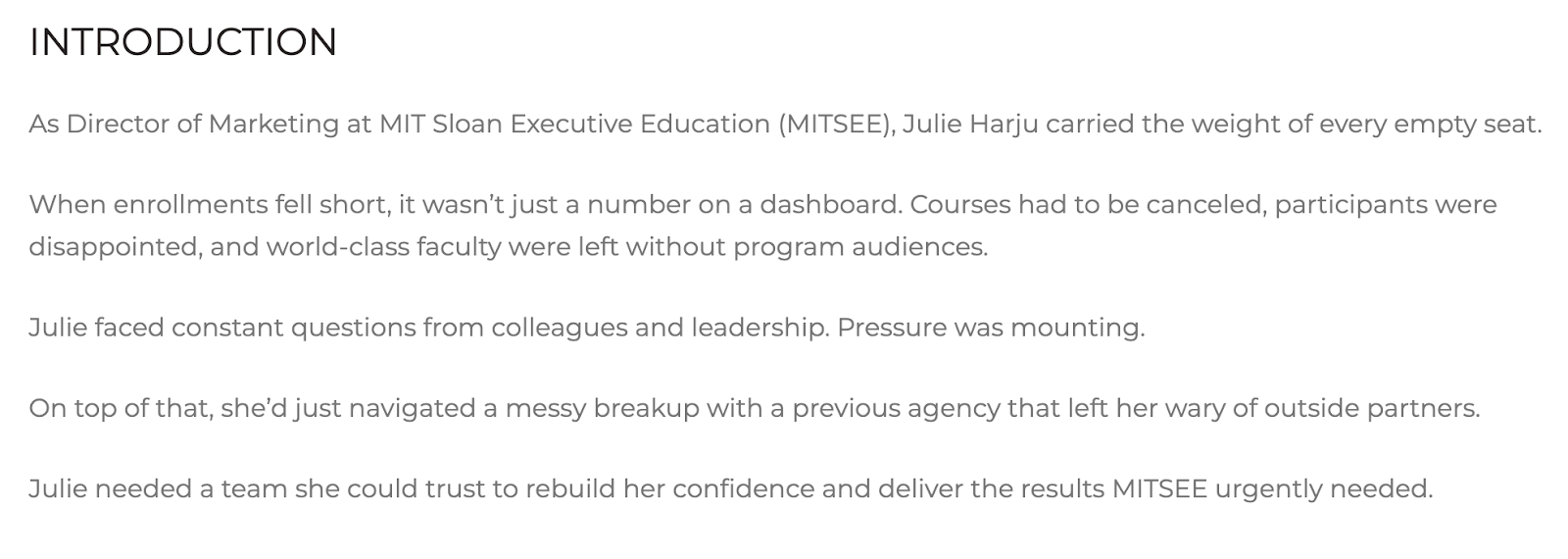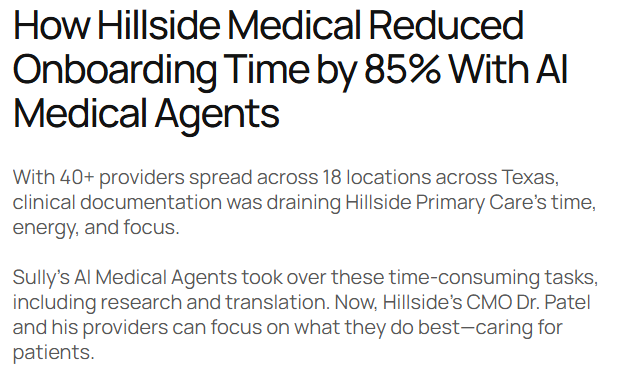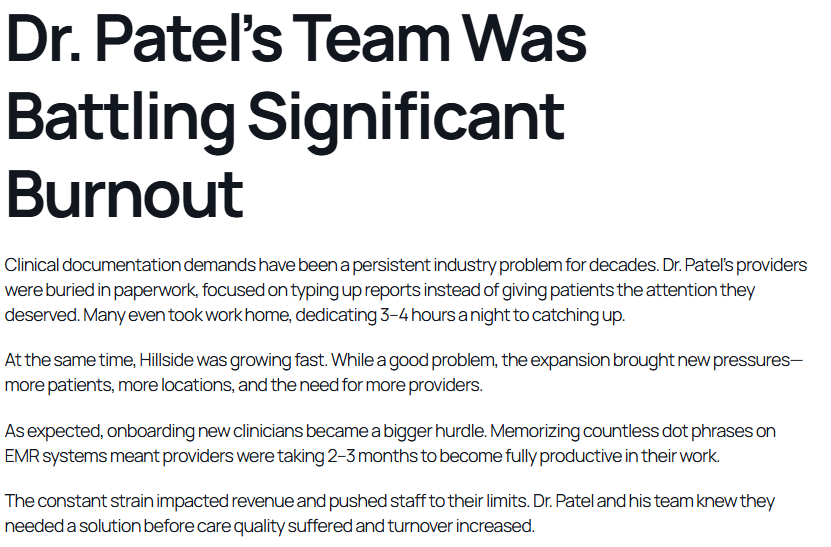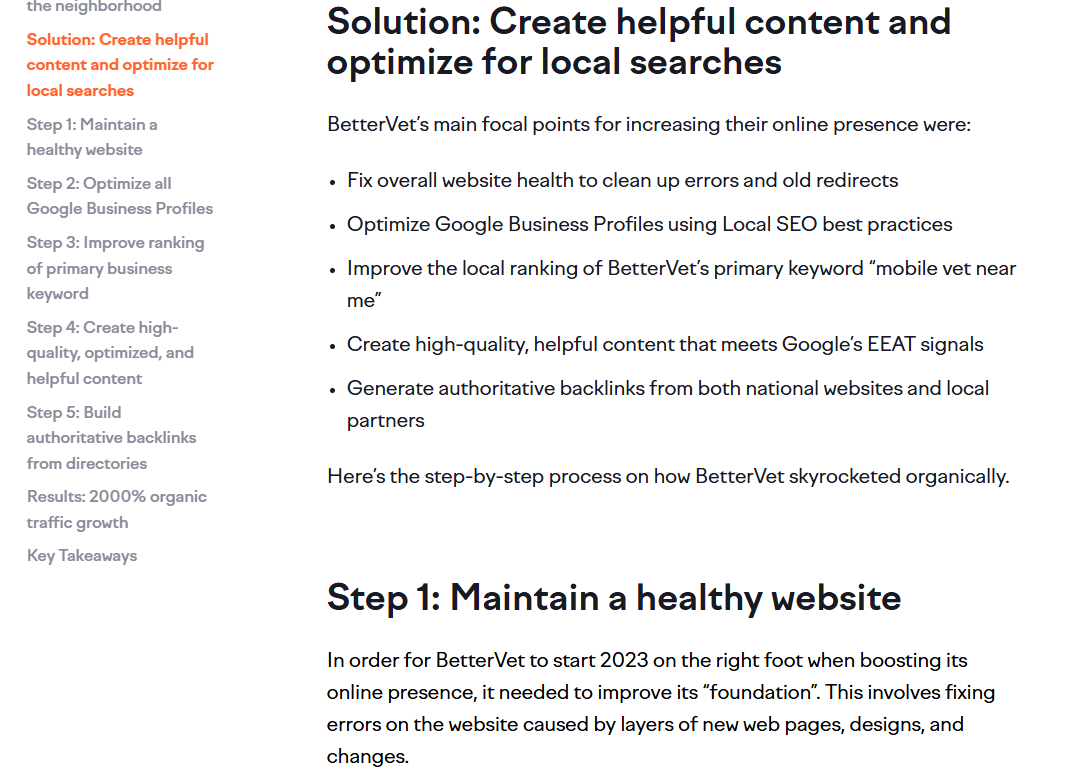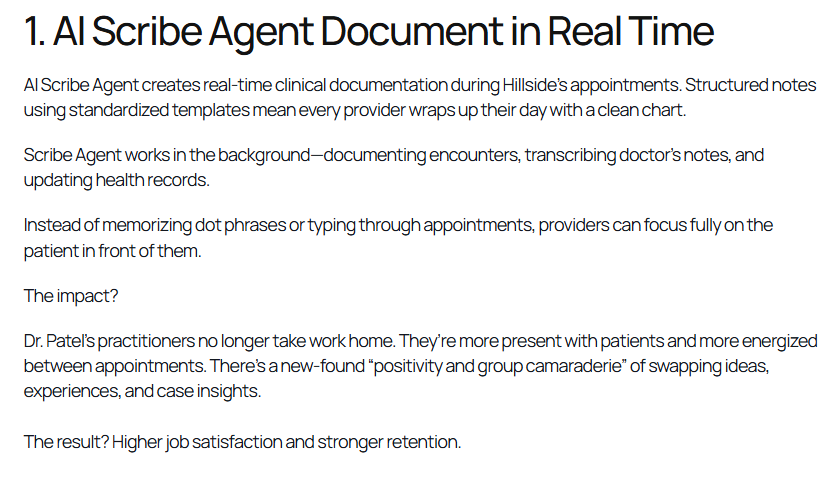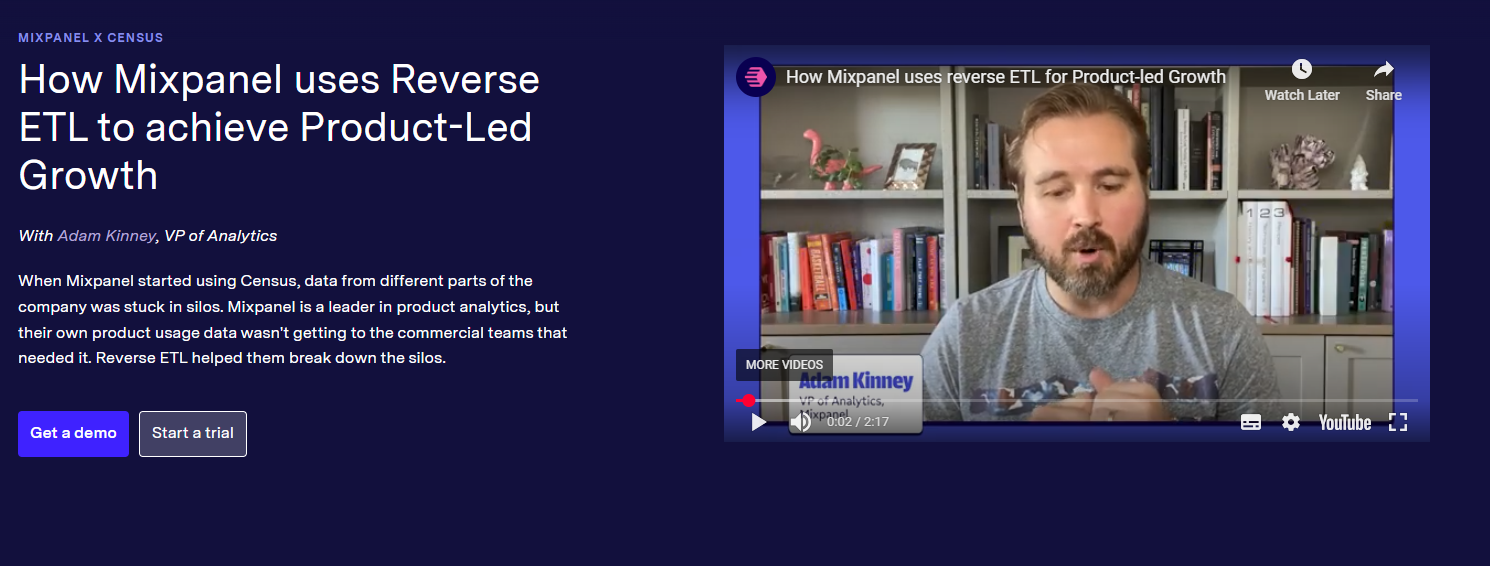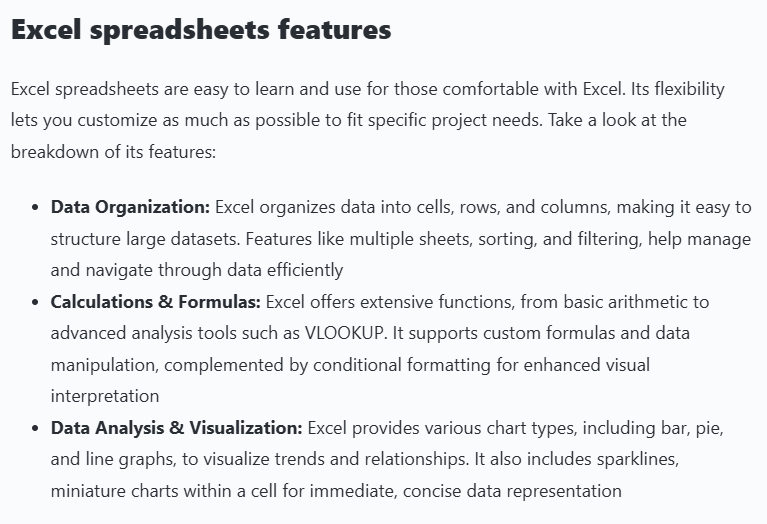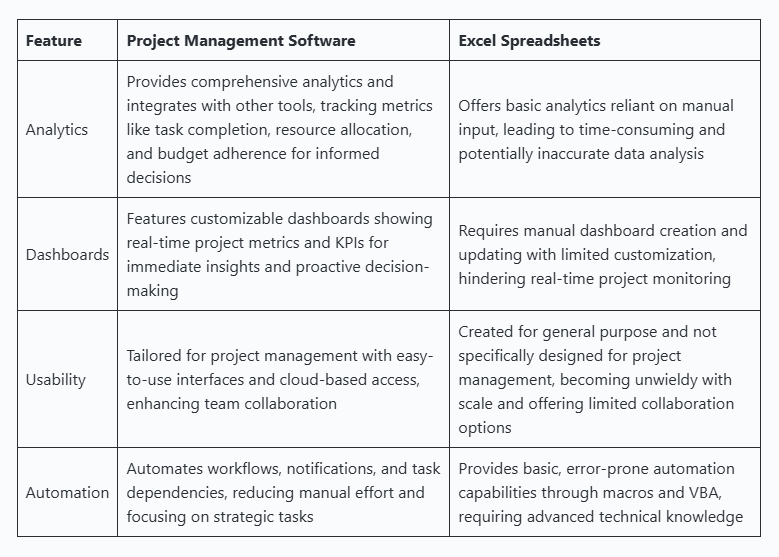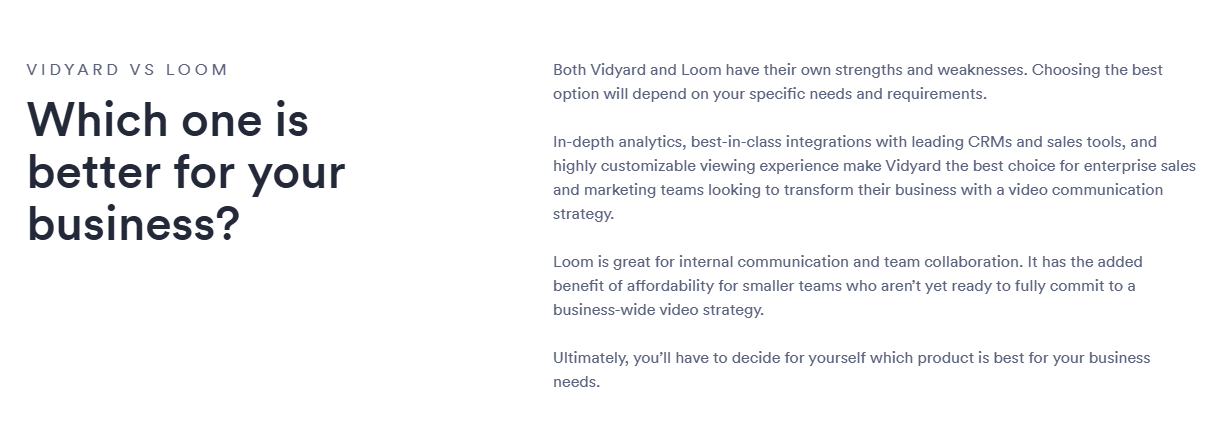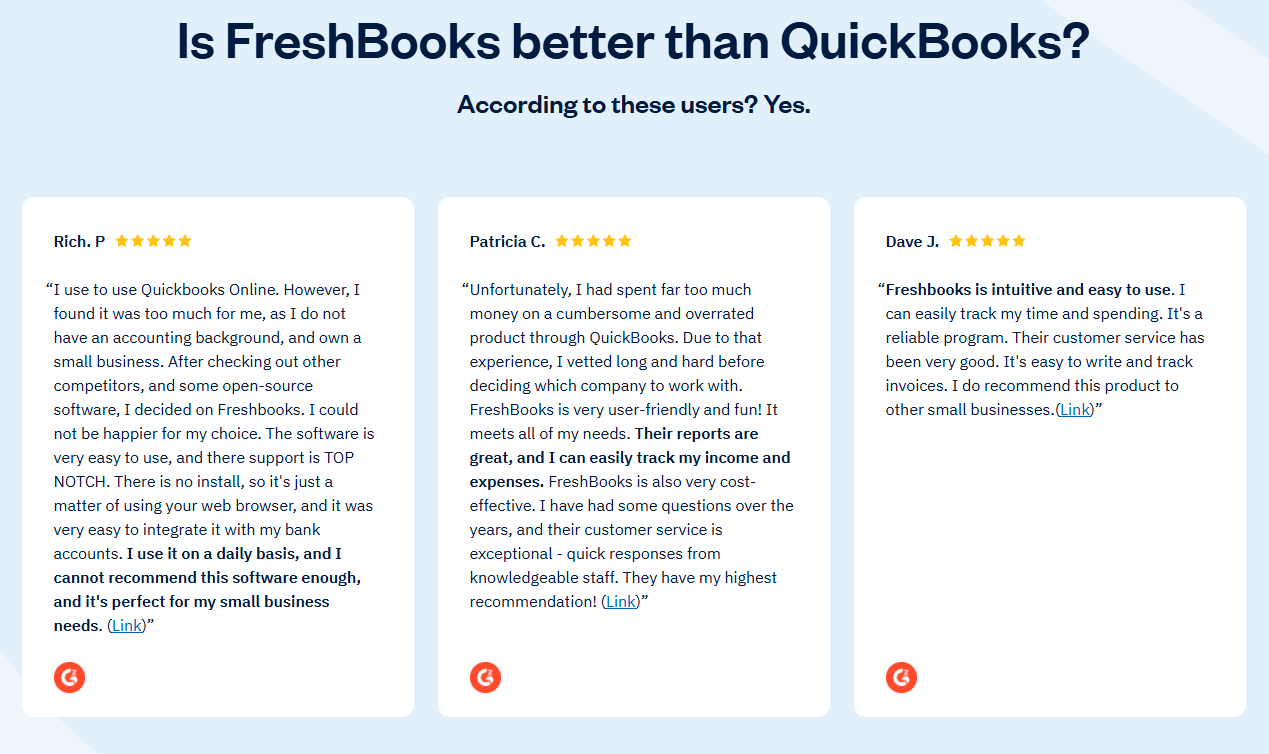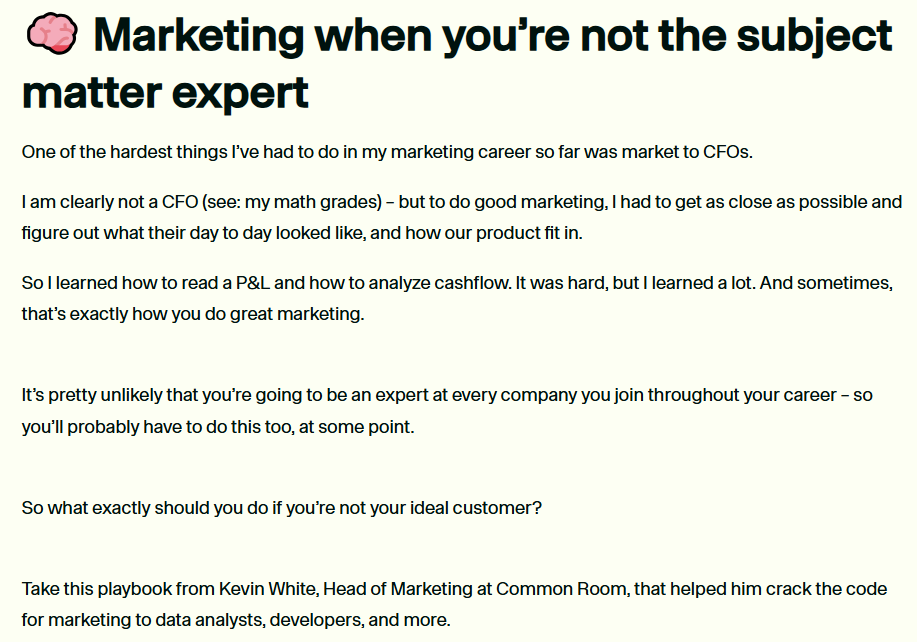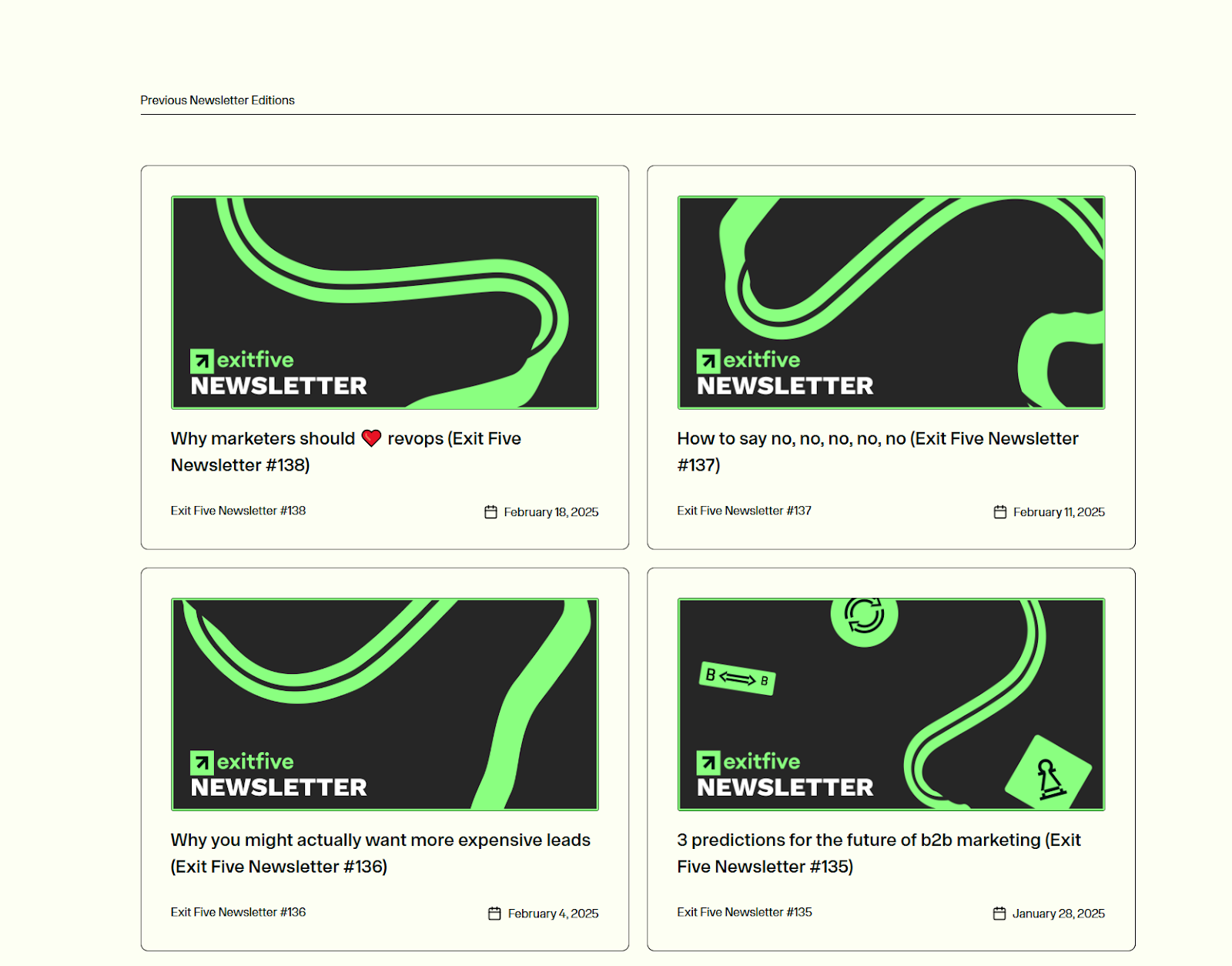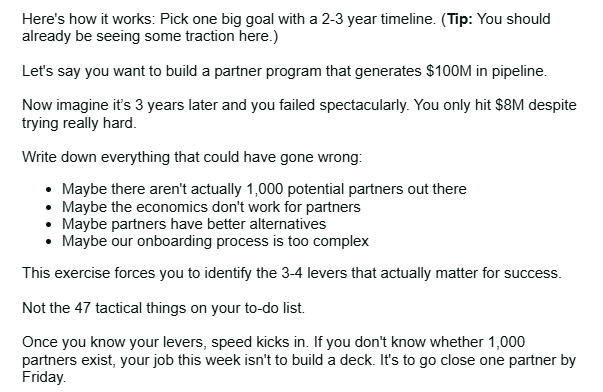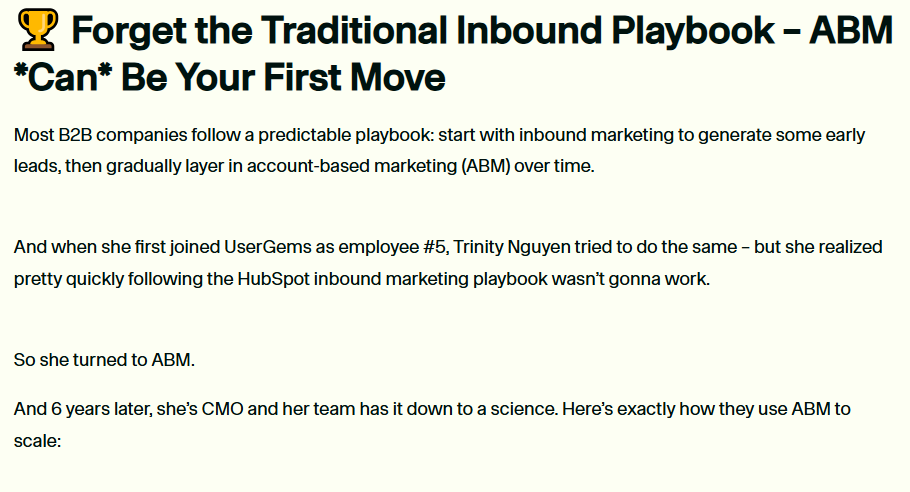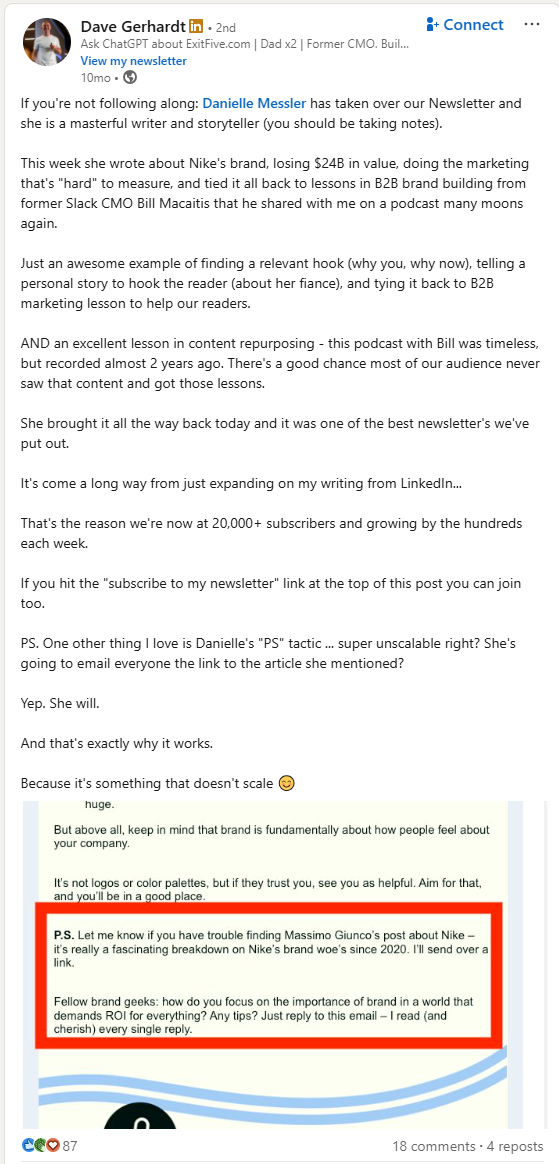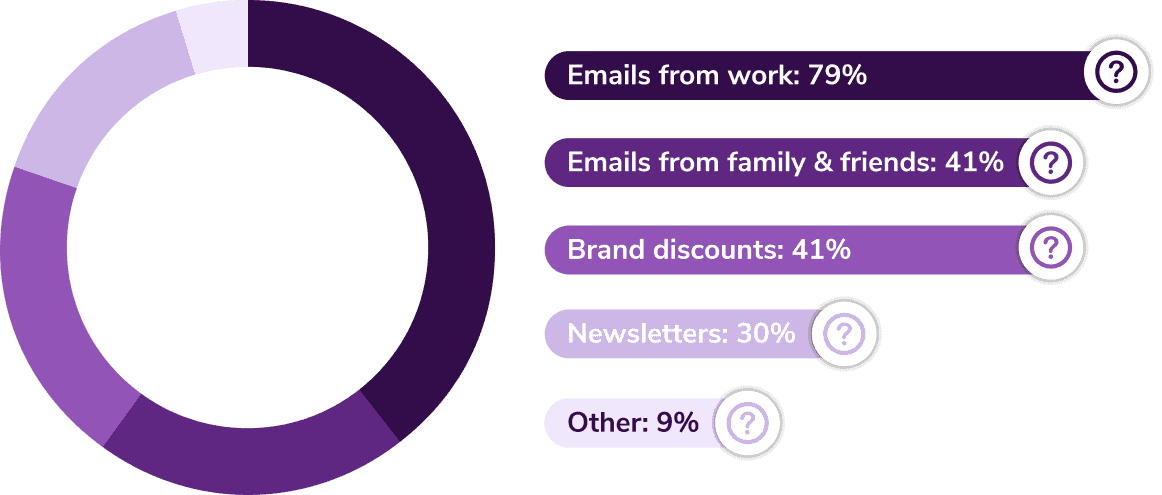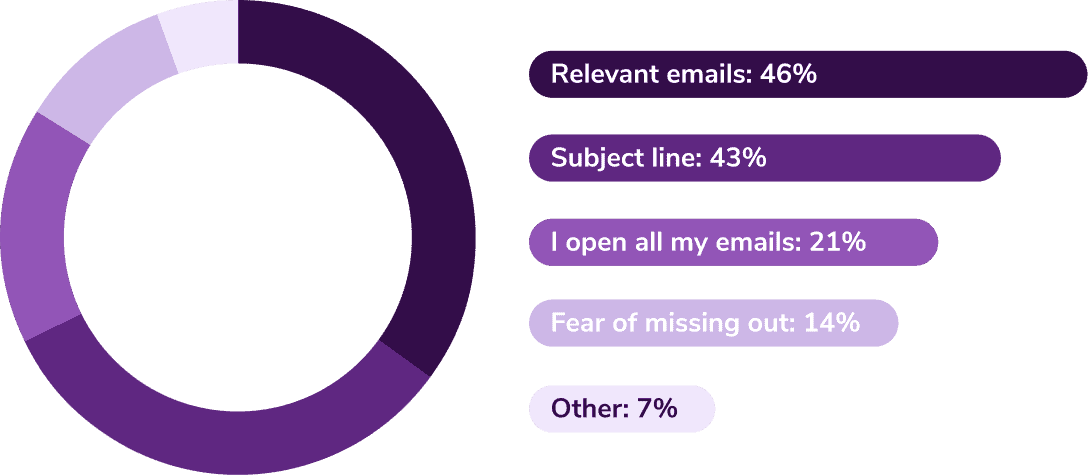This article breaks down how Headspace generates over 720,000 monthly organic visitors. You’ll learn how this ecosystem helped generate over 2 million paying subscribers for Headspace and how you can apply these lessons to a SaaS content marketing strategy.
The Headspace content strategy: delivering value through content ecosystems
The Headspace product is itself a content platform. It exists to guide people through basic meditation principles, inviting them to subscribe and take advantage of features to expand their meditation journey.
But you don’t need to be a paying customer to reap these benefits. Every piece of content is designed to deliver value and educate their audience regardless of membership or means..
The Headspace home page prioritizes this mission before presenting product features:
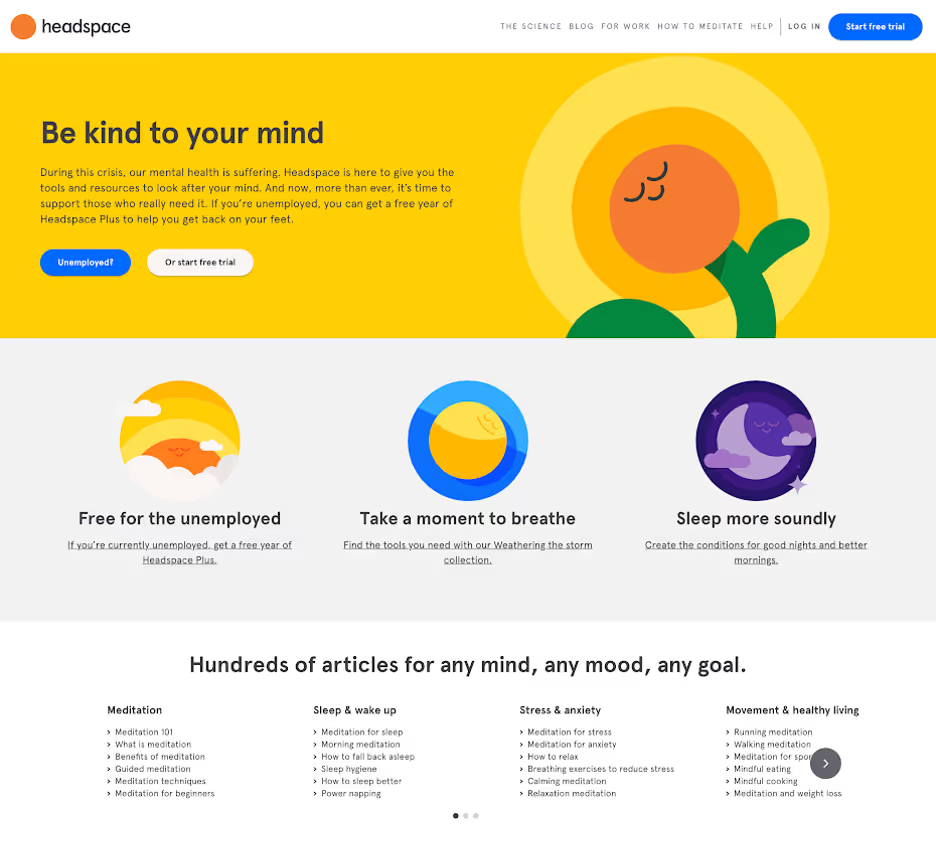
There’s a blend of urgent and evergreen content. If you’re new to the meditation scene, there’s plenty here for you to get started no matter your experience level.
Here’s what else Headspace does exceptionally well:
- A deep understanding of their customer personas—no matter where they are in their mindfulness journey
- Dedicated to over-delivering value on evergreen topics
- Rapid and agile responses to trends and major shifts in the world (e.g. when they offered free subscriptions to users affected by the COVID-19 pandemic)
- Cheerful and engaging branding that’s present throughout every blog article, video, and design asset
This strategy ensures their audience finds the information they need to start their meditation journey immediately.
This is what great content should do; inform, educate, and entertain in a way that builds awareness. Most importantly, it gets them invested in your product.
For SaaS and tech brands starting with content marketing for the first time (or those looking to improve their existing strategy), here are some lessons you can take from Headspace’s approach:
- Set the context: Why do you exist in the world? What are you hoping to help your customers achieve? This must be present in everything you create and publish.
- Conduct qualitative research: Data is critical for developing a content strategy. But you must talk with your customers to gain a true understanding of their needs. Ask them what they struggle with and what their goals are.
- Map needs to topics: Help customers solve these challenges by creating content on specific topics. Map your content to each pain-point. Identify trends that you can capitalize on.
- Go where your customers are: As part of those conversations, find where your customers are most active. Which channels, communities, social platforms, and publications have their attention?
- Build a community: Go one step further and become that channel. Create a space to let your audience come together, building a community around your product.
For example, martech brand Mutiny has created a community that brings senior marketers and revenue leaders together—both online and in-person:
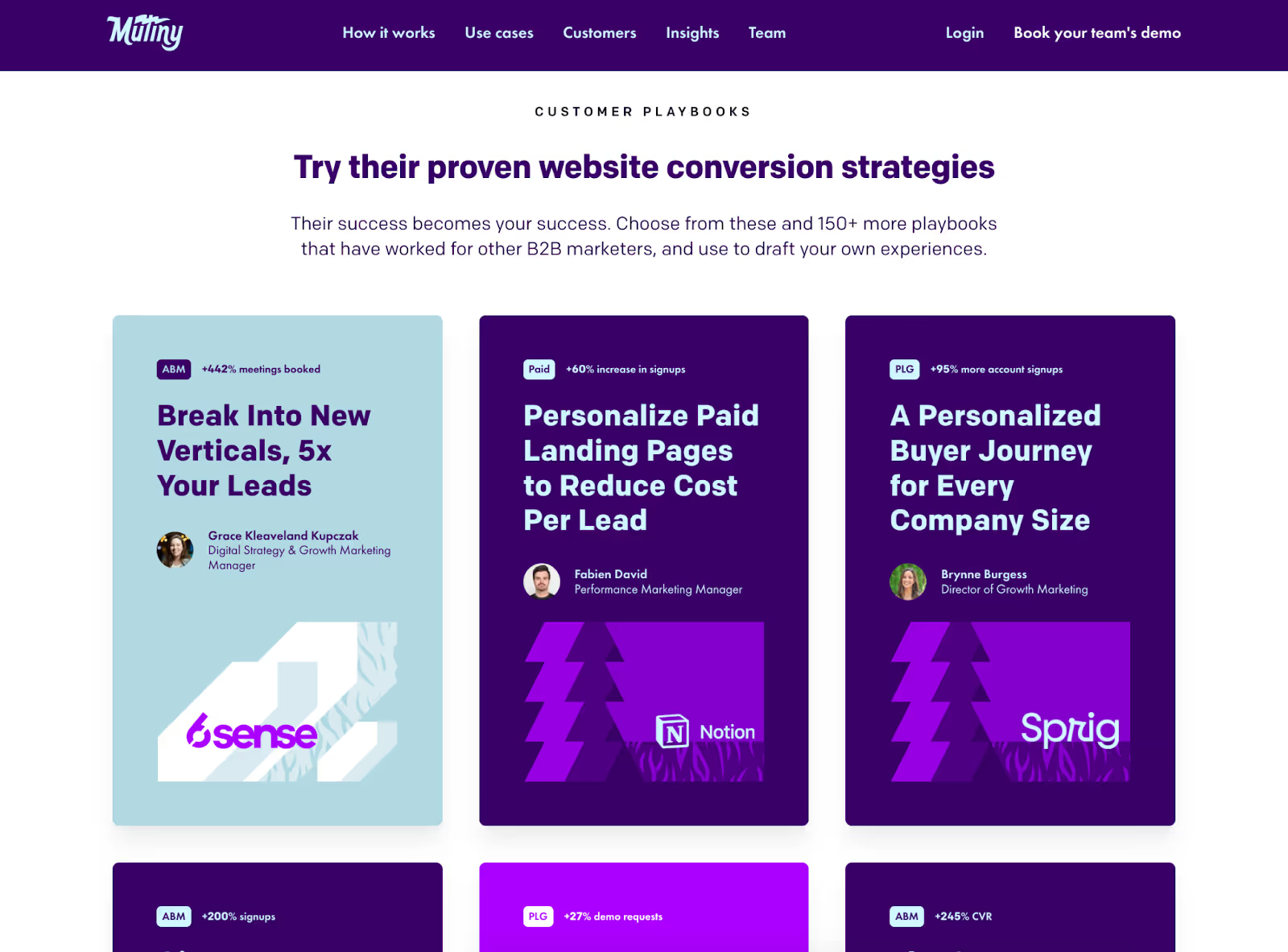
Not only does Mutiny’s community bring advocates and buyers together, but they also use it as a platform to share their stories. This philosophy transforms their customer into the hero, allowing the broader Mutiny audience to learn from their peers.
Your content strategy must serve your audience and align with your business objectives. Before publishing anything, ensure it accomplishes both of these outcomes.
Creating SEO-driven content in a competitive market
Headspace’s dedication to value-driven content helps them rank for highly competitive keywords like “meditation” and “mindfulness”:
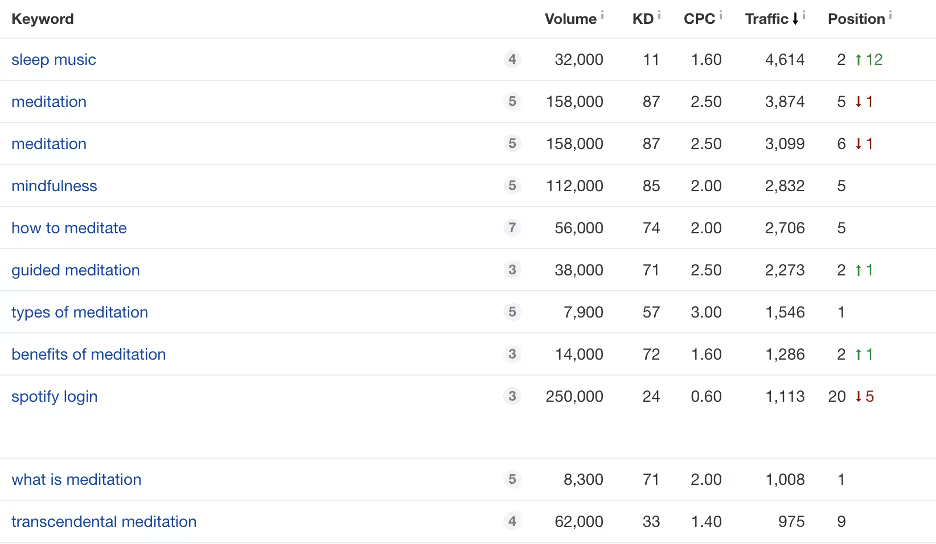
Collectively, the 143,000+ keywords they rank for generate over 720,000 visitors a month (according to data from Ahrefs).
To put that into perspective, you would need a monthly paid media budget of $619,000 to generate that traffic volume.
Let’s break their SEO-driven content strategy down further, starting with this content hub on “meditation basics:”
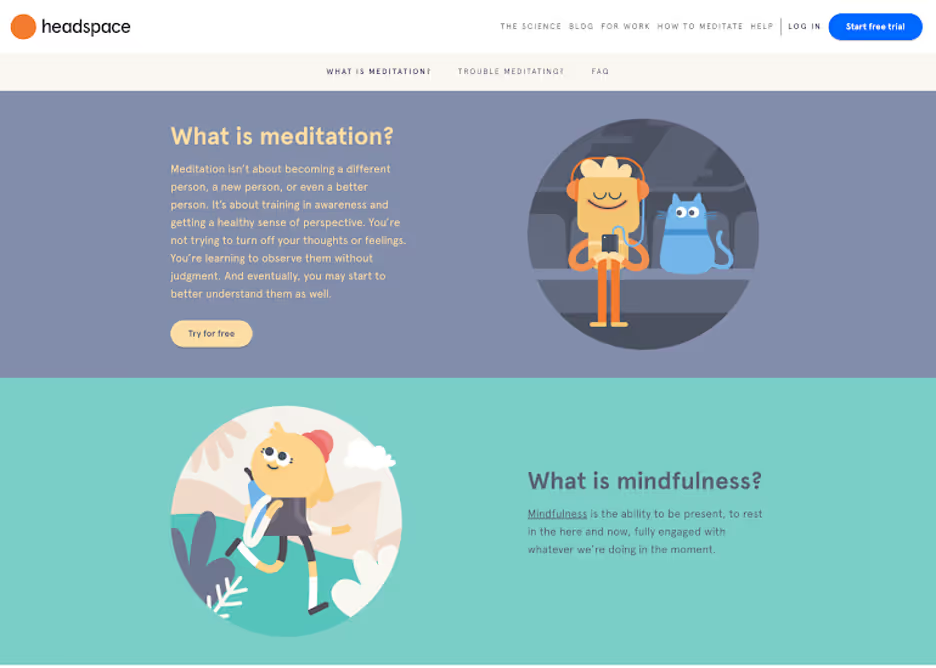
Using a hub-and-spoke approach, Headspace can create content around more specific topics, building out a comprehensive resource. This helps them build topical authority and rank for highly competitive keywords.
For example, this page currently ranks at position #9 in the SERPs for the term “transcendental meditation:”
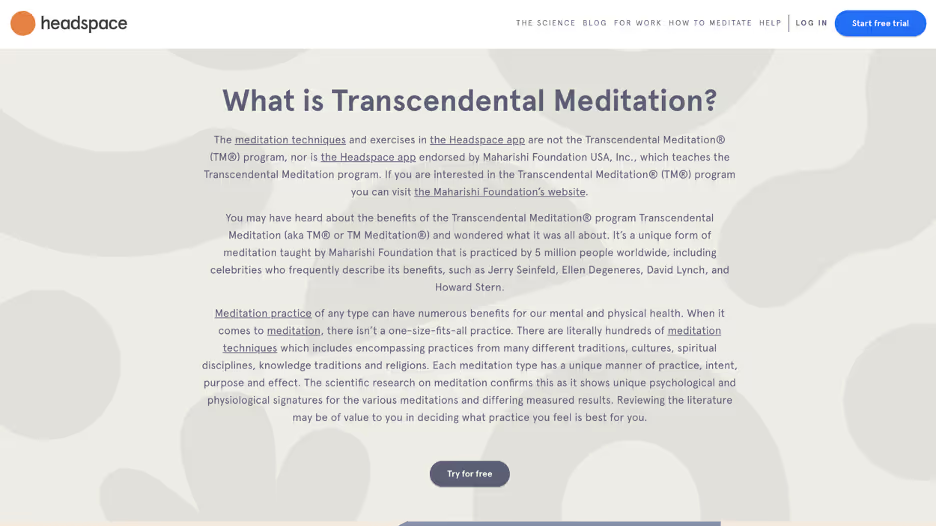
This article builds credibility and authority—both in the eyes of readers and the Google algorithm—by:
- Using objective data from third-party sources to back up claims
- Covering the basics of TM without overwhelming the reader
- Wrapping the content in a beautiful UI to keep readers engaged
The result is an incredibly engaging piece of content that organically attracts readers and backlinks.
Optimizing content for better results
A deeper analysis of Headspace’s blog presents several opportunities to improve results.
First and foremost, it could benefit from a more editorial-friendly format. In other words, remove the landing page style and reposition them as articles by expanding on each section.
Furthermore, according to Clearscope, there are several opportunities to include new themes that will help improve rankings:
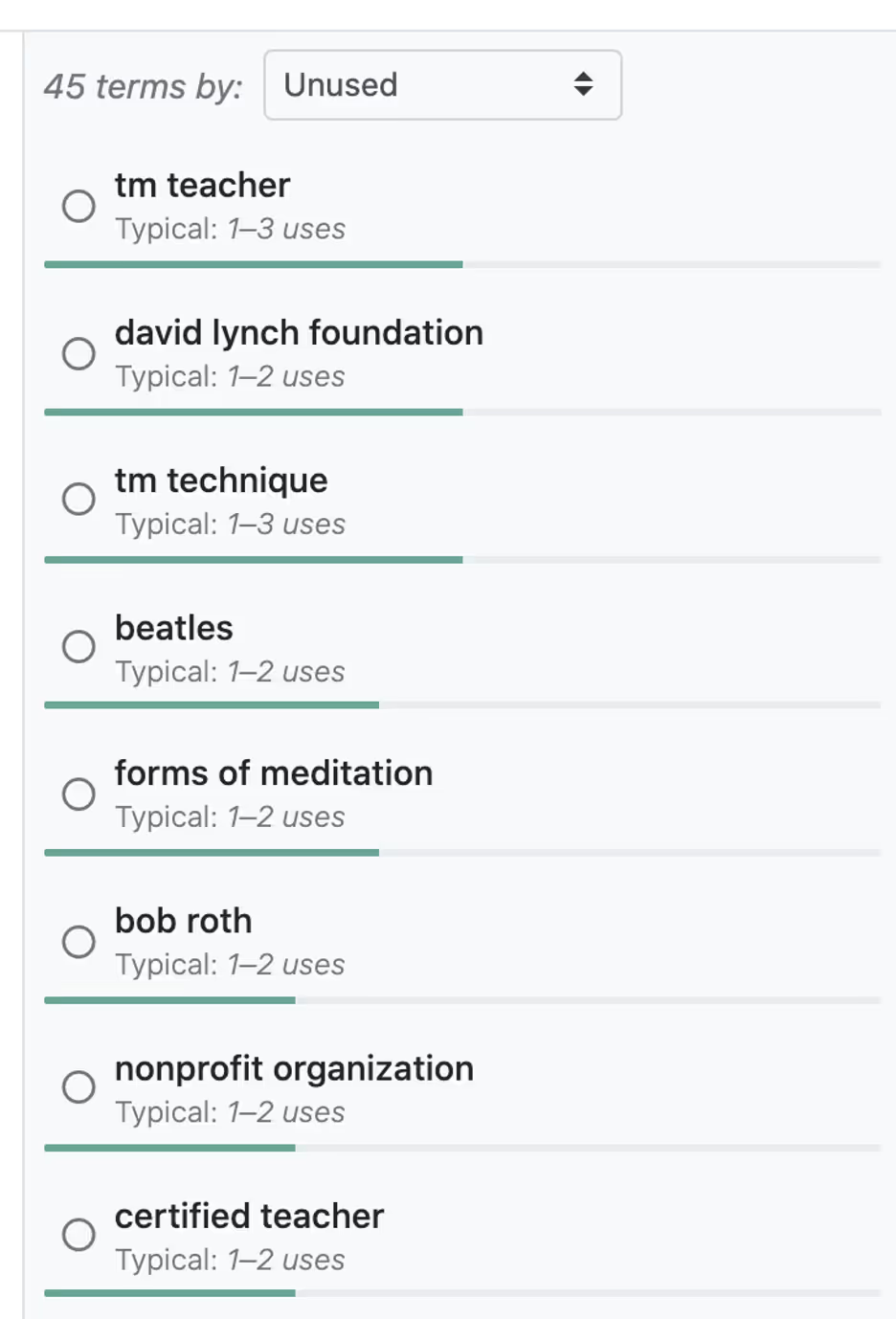
The same goes for their blog content. For example, this article ranks at position #17 for the term “high functioning depression,” which generates over 17,000 searches a month:
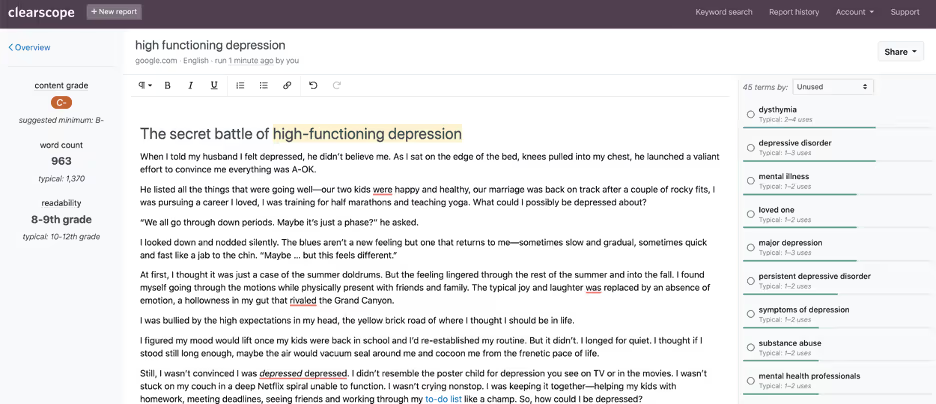
As you can see on the right-hand pane, there are several themes that the article could include to improve search performance.
I explore this in more depth in the video below:
Adopting a content optimization process can improve traffic and future-proof your content. It requires you to tend to your content like a garden. A publishing schedule and distribution act as soil and fertilizer, but you must water and prune those plants to see them flourish.
Charming and educational video content (generating over 120 million views)
Headspace's YouTube presence embodies the high-quality, educational content they're known for:"

Their presence on the world’s second-biggest search engine is impressive, with over 500 video uploads to date. According to Social Blade, Headspace’s YouTube channel generates an average of 658,543 views every day:
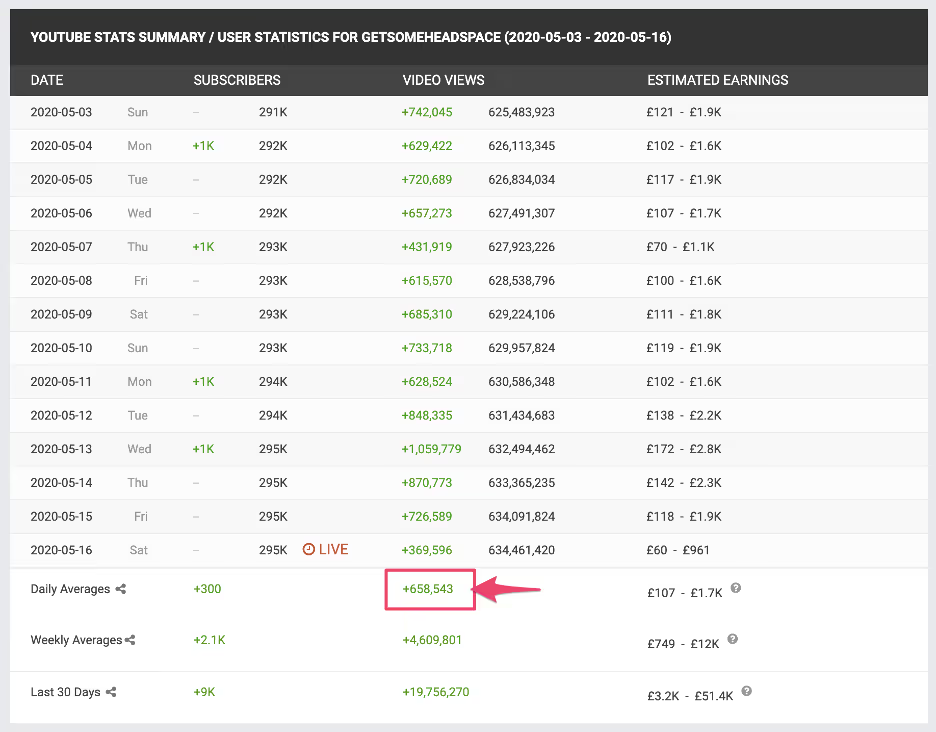
Their YouTube channel offers a cohesive experience that shares educational content around relevant topics.
Many SaaS and tech brands treat YouTube as a dumping ground for webinars, product demos, and sales enablement content.
This is a mistake. While you may attract views, you won’t build an engaged audience hungry for your next upload.
Thanks to their commitment to high-quality video content, Headspace has generated over 620,000 subscribers.
However, the question remains: how do they use YouTube as a standalone marketing platform? To answer this, let’s dig deeper into one of their most popular videos on understanding dark thoughts:
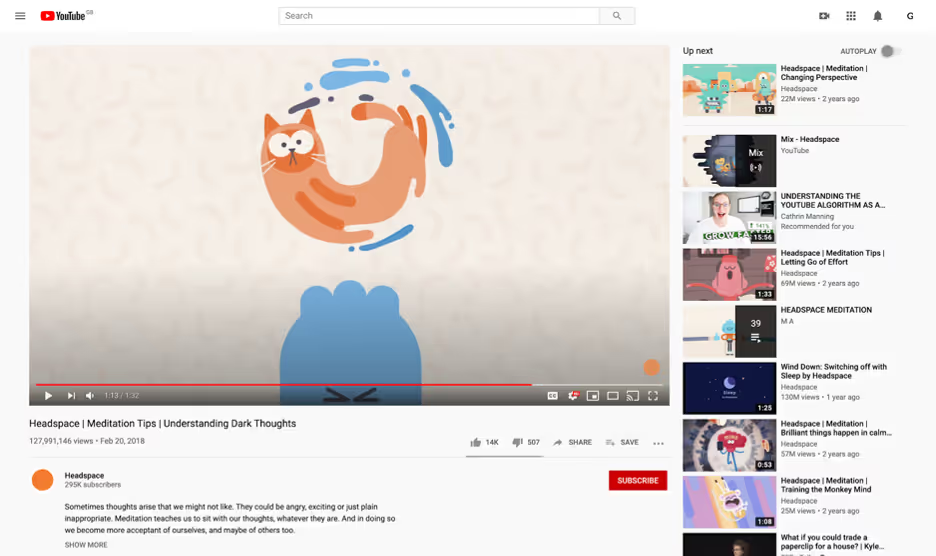
Based on the comments, we can deduce that paid media—namely pre-roll ads—has driven the majority of these 139 million views.
Despite this, it still garners a high level of engagement—with more than 14,000 likes and over 900 comments from people who find the disruption welcome.
We’ve discussed how content can fuel your paid media efforts in the past, and Headspace is proof that it works.
YouTube is also the second biggest search engine in the world, another factor that Headspace capitalizes on:

This particular video ranks for the term “meditation” and has generated over 80,000 organic views in four months.
In short, video is a critical component of Headspace’s organic and paid acquisition strategy. It generates clicks, educates their audience in entertaining ways, and drives new users.
Creating exceptional video content at scale
Producing high-quality video used to be a mammoth task. However, it’s not as expensive and time-consuming as it used to be.
By establishing visual styles and adopting proven video frameworks, producing video content at scale is now simple and affordable.
Headspace uses constraints to publish beautiful video content consistently. There’s a clear visual style, with each video focusing on a specific purpose:
- Short guides: Beautifully animated videos that provide advice on specific topics
- Interviews: Long-form videos where Headspace’s founder, Andy Puddicombe, interviews experts and thought leaders
- Direct-to-camera: A scripted format where Andy sits in front of the camera to provide meditation advice
They’ve also created several “limited video series” around specific topics. One example is “Sleepcast,” an audio series providing free bedtime meditations:
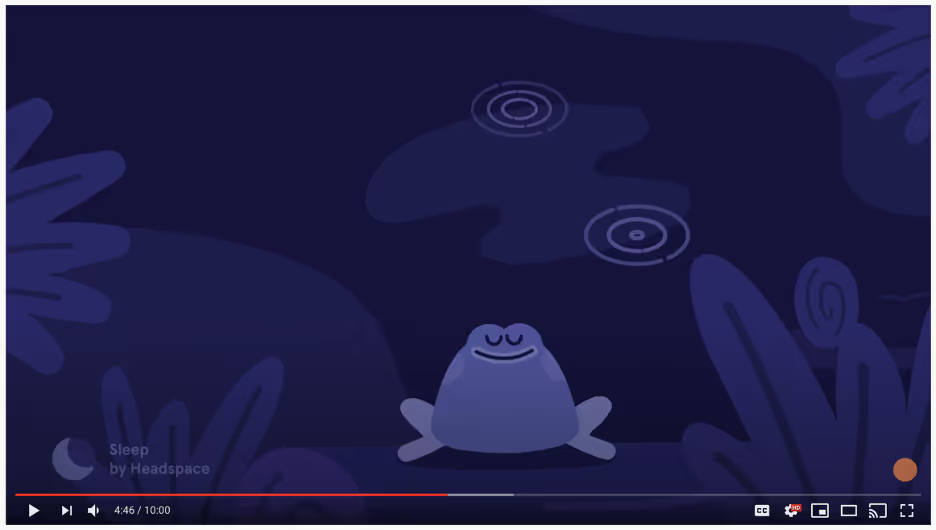
Applying constraint to your video marketing allows you to scale up production while maintaining a high bar for quality. Commit to specific frameworks and batch elements of the production process to maximize resources.
For example, if you’re looking to publish four direct-to-camera videos a month, batch the live-action portion across one or two days.
Use your social media presence to set audience expectations, create a cohesive experience for viewers, and get them excited for future videos.
Digital PR, link building, and getting featured by Bill Gates
Headspace have gained their fair share of press attention. With mentions from CNBC, Forbes, and even Scientific American, they’ve effectively climbed the attention ladder.
Done right, digital PR contributes to brand awareness and helps you connect with prominent industry influencers.
Headspace’s digital PR activity took on a life of its own when they caught the attention of Bill Gates. In his own words, the product helped him go from meditation skeptic to believer:
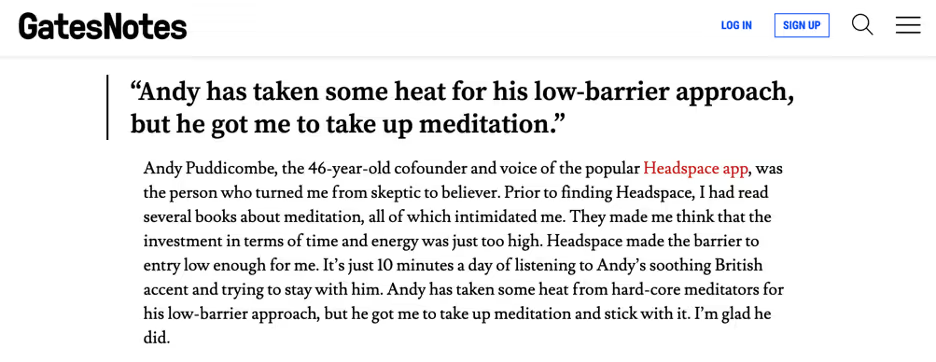
Headspace consistently get picked up by publications for several reasons:
- They create exceptional content in a variety of formats: This includes blog and video content, as well as “traditional formats” such as books. Package and position your content in new ways to open up distribution opportunities.
- They simplify complex ideas: The science behind meditation can be daunting. Andy and the team have broken this into digestible chunks, seen throughout their entire content ecosystem.
- They produce owned data: Journalists are hungry for new studies and data to cite. It helps them back up their content, make accurate claims, and increase their stories' credibility. Create data-driven content, become a go-to resource, and generate backlinks in the process.
Headspace goes one step further, partnering with scientists and organizations to conduct their research. Not only does this amplify their reach, but it makes these studies more credible:

This approach can help fuel your link building efforts. Do this by creating assets that allow creators and brands to enhance their content. Experiment by creating content around highly shareable formats:
- Thought leadership: Expand on a topic and deliver delightful experiences. Make your content so comprehensive that others can’t help but link to it.
- Studies and research: Use owned data to conduct research and report on trends. Survey your audience about their experiences or thoughts on specific topics.
- Infographics & visual content: Content creators are hungry for illustrations, graphs, and infographics to include in their content. This helps them make their content more valuable and engaging.
Social media scheduling tool Buffer took a data-driven approach to digital PR with their “State of Social” report:
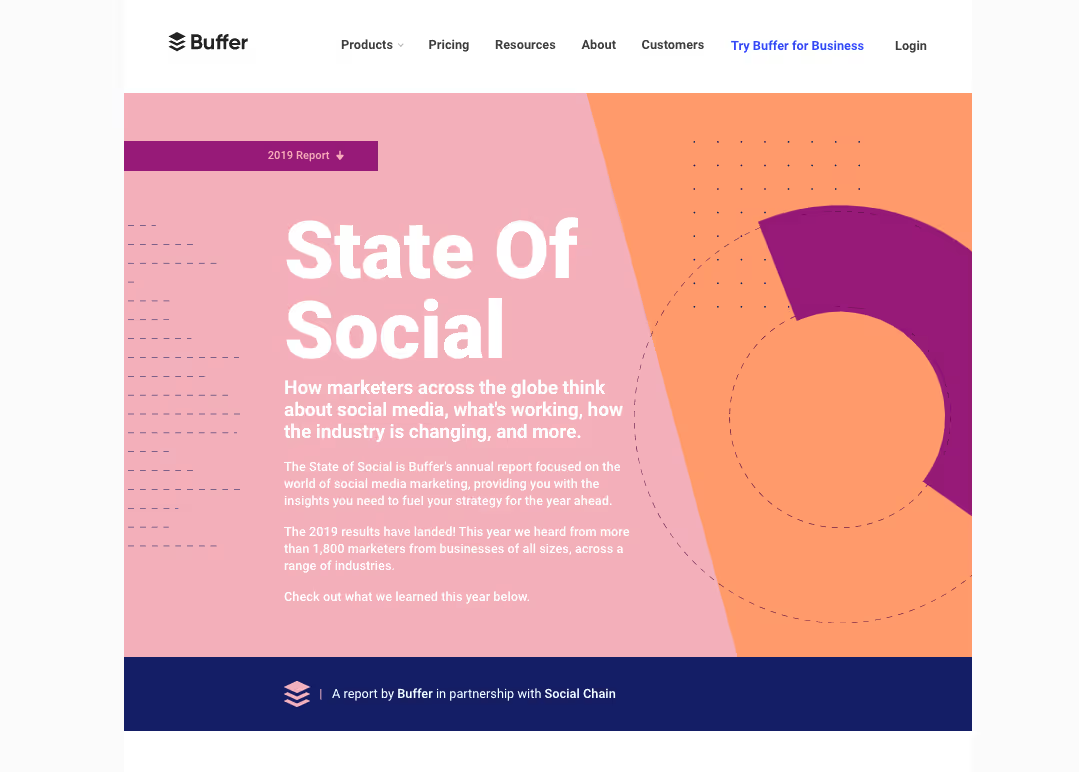
Over 100 blogs and publications cited this report in its first 14 days of publication. At the time of writing, it now has over 1,280 referring domains.
Developing strong relationships is a critical ingredient for digital PR. Cold outreach has its place, but establishing partnerships and collaborating with other brands is more effective in the long term.
Why? Because editors, bloggers, and journalists get bombarded with generic pitches every day. Instead, find ways to collaborate and help everyone win.
For example, we recently helped a martech client get featured in several publications and blogs by creating content with other marketers. Using this approach, we achieved a 37% response rate and a 44% link acquisition rate.
It’s not just about links. These conversations will lead to other business opportunities that ultimately help you capture a wider audience.
Building a personal brand around Andy Puddicombe’s expertise
Founders often start their business around a problem they have first-hand expertise in. It’s essential to get that expertise out into the world.
To date, Headspace Founder, Andy Puddicome, has talked at leading conferences like TED, SXSW, and The Ellen Show:
His story is compelling and easy to connect with. The journey that led him to create Headspace is full of valuable lessons we can use when adopting a meditation practice.
No matter the size of your company—or your role within it—you can share your voice and story to build connections and bridge the gap between brand and customer. This works best for:
- Founders and CEOs: Become the face of your company. Connect with influencers and connectors in your space. Those relationships will last a lifetime when the time comes to step away from the spotlight.
- Marketers: Same goes for growth, demand generation, and content leaders. You can make your job easier by becoming the face attached to every blog post, guest post, or video. You’ll achieve results for your company while advancing your career in the process.
For example, May Habib, Co-founder and CEO at Writer, uses LinkedIn to share content around generative AI and product updates happening at Writer:
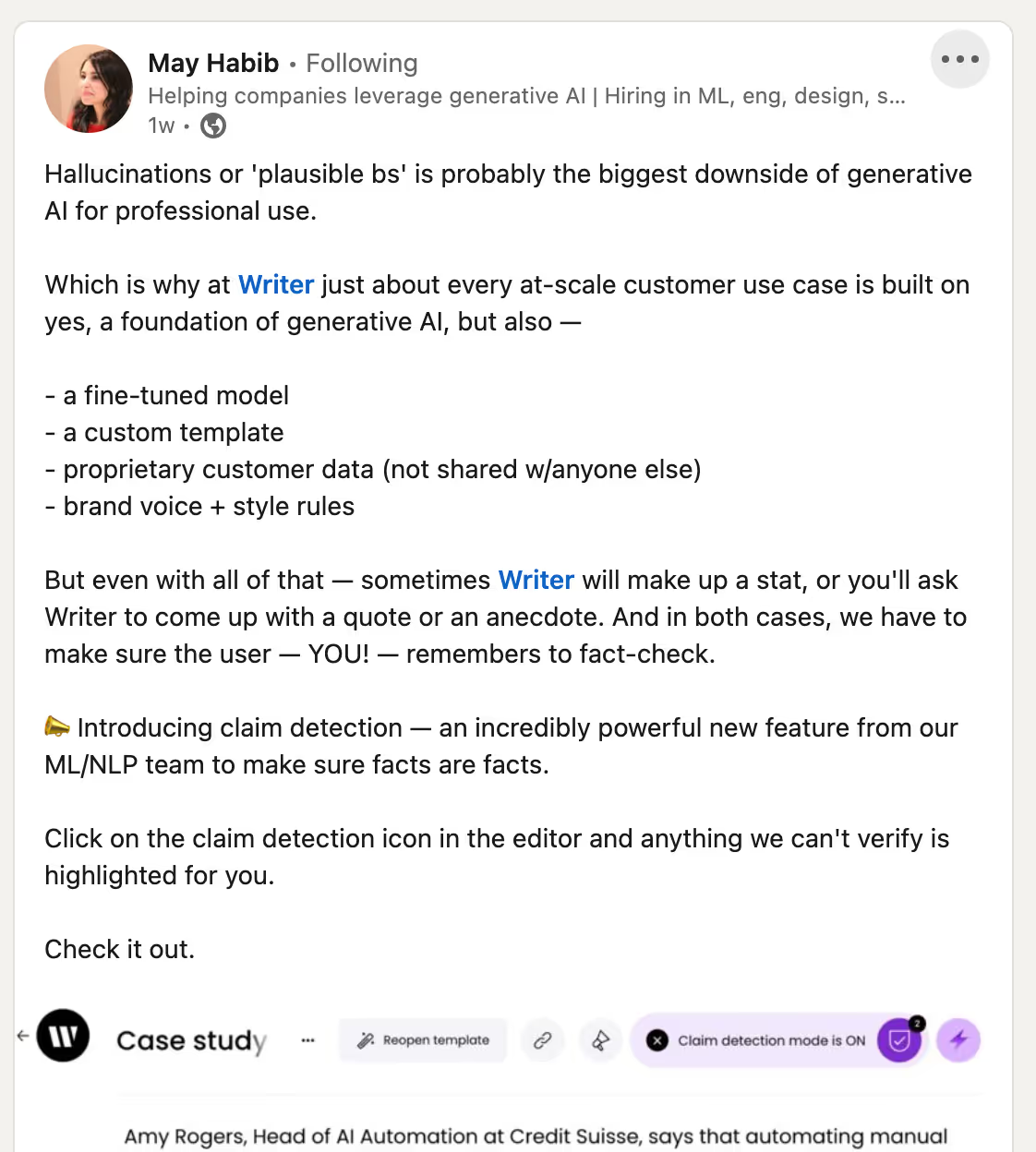
People connect with other people. Building a personal brand and human presence is important for both startups and enterprise companies alike.
Converting readers and viewers into paid subscriptions
No matter where you look, Headspace offers one clear call-to-action:
“Download the app.”
This kind of CTA can often be a huge ask when selling complex or high-ticket offerings. For product-led SaaS or tech brands like Headspace, it makes absolute sense.
Let’s look at what the customer journey from “awareness” to “subscription” may look like for a single user to understand why:
- They browse YouTube and get suggested a video from Headspace teaching a specific meditation technique
- They watch the video and decide to read more about the concept on the Headspace blog
- They follow a link to another article and decide to download the app and follow the free 10-day meditation program
The Headspace content ecosystem contributes directly to user acquisition. From here, they can deliver more value in the app with free lessons, using relevant CTAs and offers to convert free users into paid ones—the classic freemium model.
In this sense, the Headspace product is part of this content ecosystem. It makes sense to drive app downloads from blog posts, YouTube videos, and other owned content assets.
For SaaS and tech brands, the offers and CTAs you use across your content will depend on the complexity of your product, solution, and the nature of your sales process.
You might offer a newsletter CTA to build an audience and slowly nurture them into leads. Or, you could offer a free trial or demo of your product. This is especially effective when crafting crafting bottom of funnel content.
Headspace can nurture free users with three methods:
- Email marketing (newsletters, announcements)
- Mobile push notifications (retention)
- Product marketing (adding new free content)
For example, the email below invites free users to dive back into the app if they’ve not tried a meditation after a specific period of time:
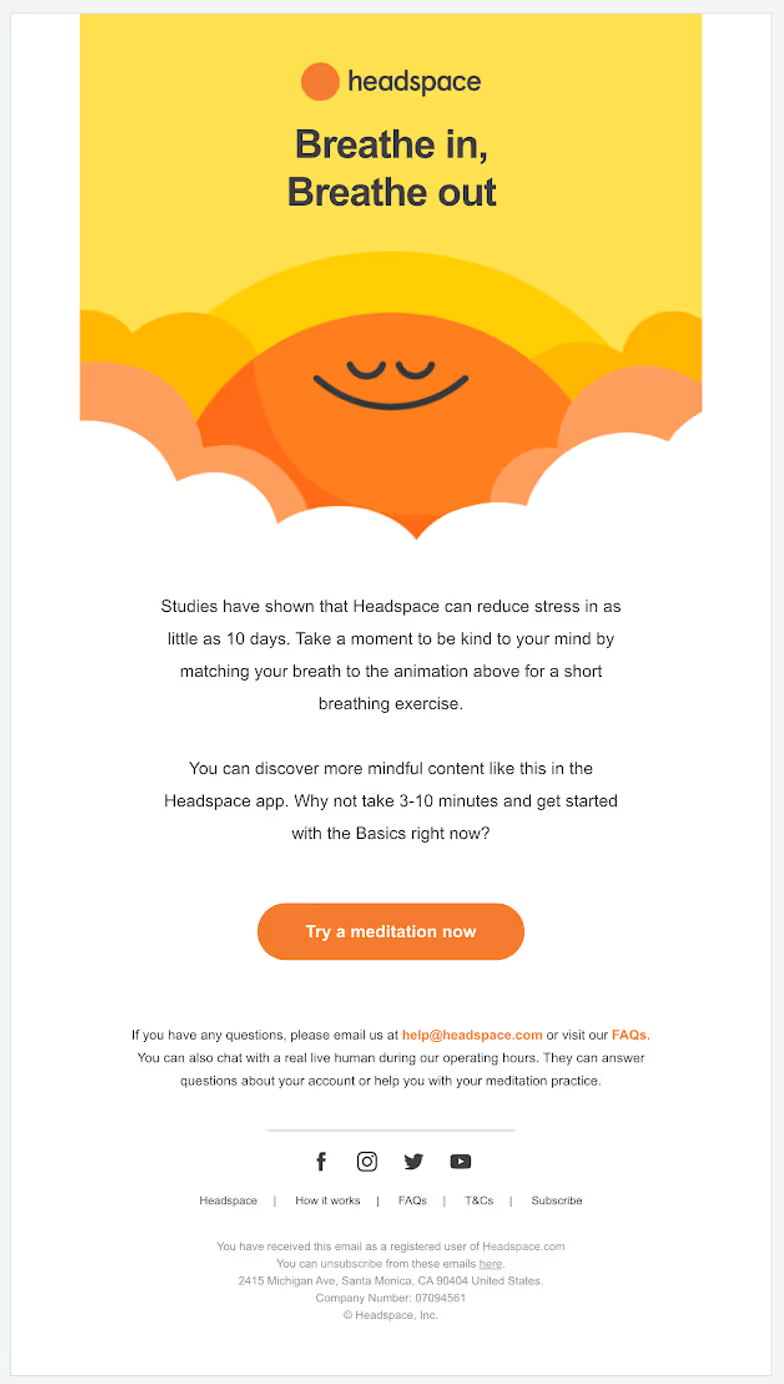
The CTA encourages the user to learn the basics, easing them in by addressing a time-based objection: it takes three to 10 minutes.
Users are far more likely to continue their journey and invest in a monthly subscription if they consume free content within the app.
Build a content ecosystem
Any B2B or SaaS brand can learn something from Headspace.
They’ve built their content strategy on the premise of delighting, educating, and empowering their audience at every touch-point. It’s no wonder they’ve created a product loved by millions of users.
Great content marketing establishes a strong foundation for trust to emerge—all while contributing to critical growth goals needed for success.
Start with your existing customers. Discover why they value your product and put more of that into the world. Do this across your selected channels, and you’ll quickly build a brand your audience loves.



